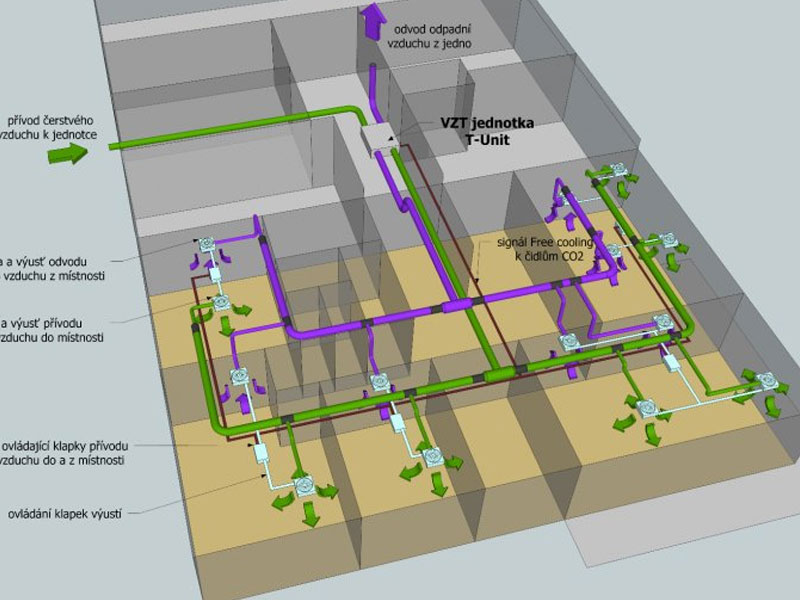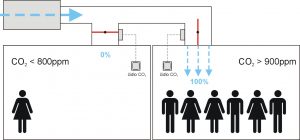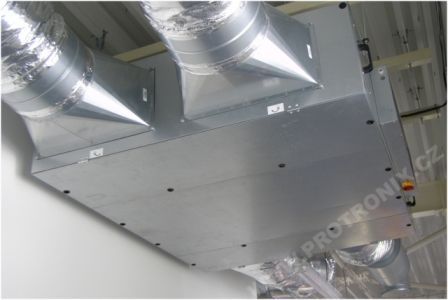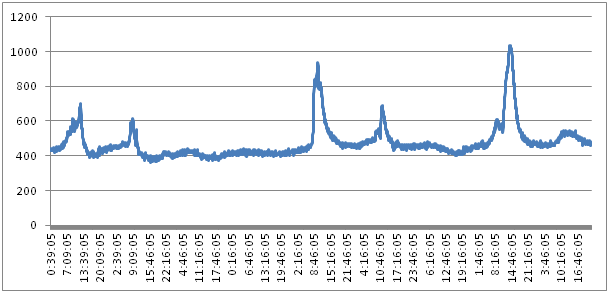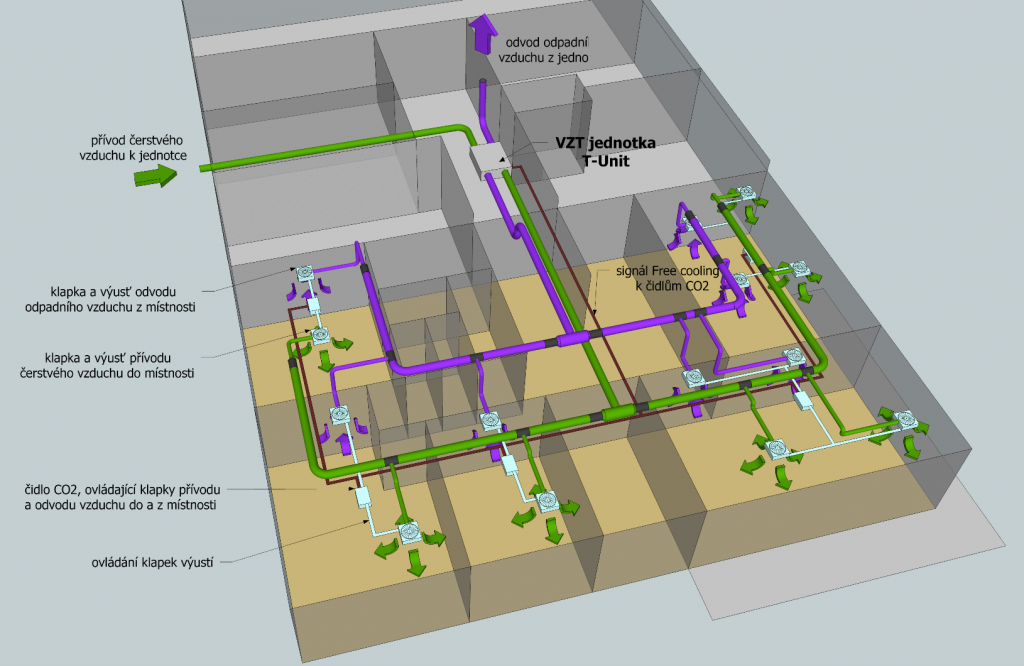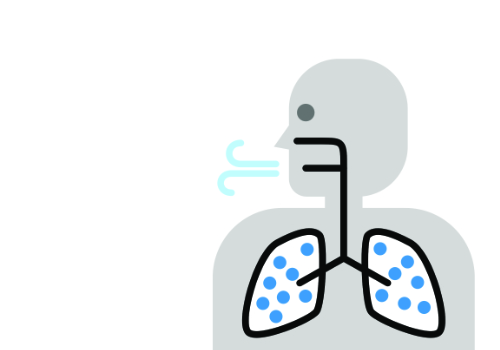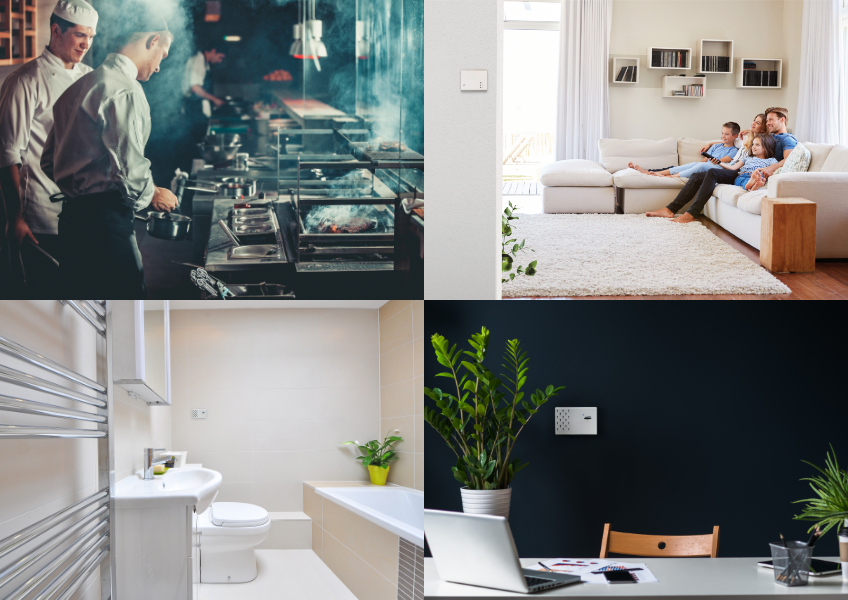Intelligent ventilation systems
Forced ventilation systems usually work on the basis of so-called time control, which means that the volume of air exchanged depends on time intervals. In this case, it can sometimes happen that air is exchanged more intensively than is necessary in a given situation. This is the downside of controlled ventilation – it leads to air overdraught and also wastes energy. However, even this single disadvantage can be solved by a more economical way of ventilation – ventilation controlled by actual need.
What do you mean by “real need”? Simply, it is the necessary amount of air that needs to be supplied to the interior depending on the actual requirements. There are basically two actual demand controlled systems – VAV and DCV.
DCV system
A DCV system (Demand Controlled Ventilation) is a system of continuous control of ventilation by air quality sensors. Their instantaneous performance is therefore dependent on the actual air quality. The DCV system has flaps on the supply duct that are continuously adjustable. Each flap again has its own air quality sensor, which, however, continuously controls the required amount of supply air with its analogue signal. The advantage is a more constant indoor air quality, the disadvantage is the higher investment costs for the actuators of the continuously controllable flaps.
VAV system
VAV is from the English word Variable Air Volume, i.e. ventilation with variable air volume. This ventilation system is used to ventilate the office space in our company. Ventilation is provided by a heat recovery unit with a plate counterflow heat exchanger and control electronics from our own development. This unit operates in a mode of maintaining a constant pressure in the outlet/inlet ducts to the individual offices.
Each office is equipped with one carbon dioxide sensor and a damper on the duct. The inlet damper in each office is controlled by a control servo which is controlled by the CO2 sensor. If all the offices are empty and there is unexhausted air, the heat recovery unit operates at minimum power because all the dampers are closed and the required duct pressure is easily achieved. If people come into the office, the CO2 concentration will gradually start to rise and when the preset concentration level is exceeded (in our case 950 ppm), the sensor will give a command to open the supply damper. As a result, the pressure in the supply duct drops and the heat recovery unit then automatically increases its output (trying to maintain the preset pressure in the supply duct) and thus starts to ventilate the office that has the air that is out of breath. Once the CO2 concentration drops below the lower limit (in our case it is 800 ppm), the supply and exhaust damper closes again and the office stops ventilating. In this way, individual offices are ventilated and the power of the heat recovery unit, or the total air demand, is transmitted to the heat recovery unit via the actual supply duct pressure.
The flaps in the individual offices are equipped with a type of actuator that only provides open/close control of the flaps, thus not allowing continuous adjustment of the closing flap position.
The flaps in each office are equipped with a type of actuator which only controls the flaps by open/closed system, thus not allowing continuous adjustment of the closing flap position.
Initial system regulation
When the system was first launched, it was necessary to set up the system so that each office was ventilated with sufficient air according to the number of people working in it.
The regulation of the ventilation system was carried out by first opening all the dampers in all offices and measuring the amount of incoming air in the outermost one. The pressure in the supply duct behind the ventilation unit was then gradually increased to achieve the required air supply to this outermost office according to the number of people working in it.
Then, progressing towards the ventilation unit through each office, the required amount of supply air was always set by adjusting the maximum open position of the supply and extract dampers. The maximum opening angle of the supply and extract dampers was therefore set individually for each office using an adjustable end stop. The ventilation unit was then switched to the normal operating state, where the required supply duct pressure was set to the value found during the initial adjustment.
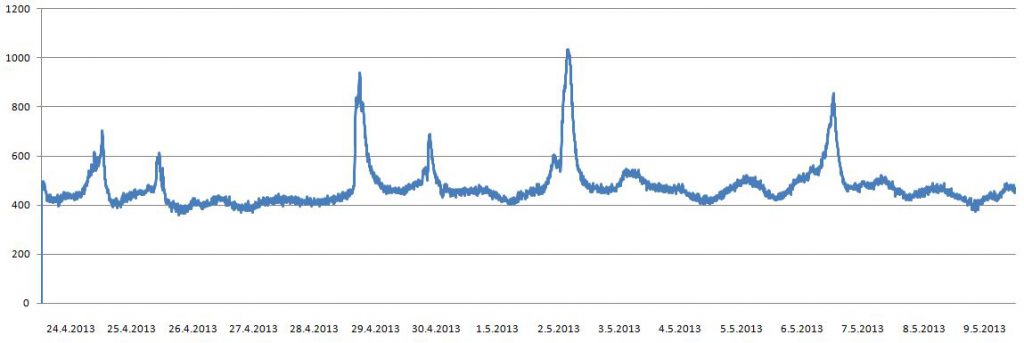
Record of the CO2 concentration in the meeting room and office that are ventilated by the VAV system described above
Want to get regular emails from the world of air quality sensors and HVAC?
